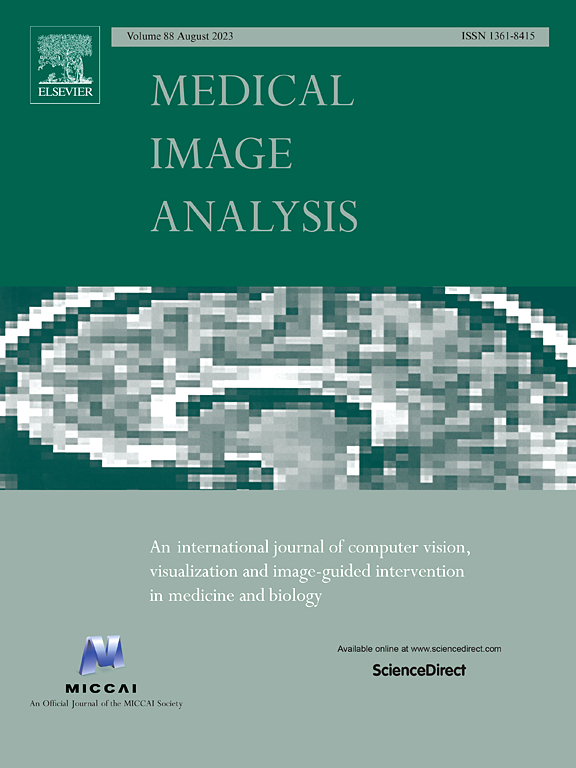用于半监督医学图像分割的双重结构感知图像滤波技术
IF 11.8
1区 医学
Q1 COMPUTER SCIENCE, ARTIFICIAL INTELLIGENCE
引用次数: 0
摘要
半监督图像分割最近引起了极大的关注。关键在于如何在训练过程中利用未标记图像。大多数方法都能在图像和/或模型水平变化(如添加噪声/扰动或创建替代版本)的情况下保持对未标记图像的一致预测。在大多数图像级变化中,医学图像往往具有先验结构信息,而这一点尚未得到很好的探索。在本文中,我们提出了新颖的双结构感知图像滤波(DSAIF),作为半监督医学图像分割的图像级变化。连通滤波通过基于结构感知的树状图像表示中的滤波来简化图像,受此启发,我们采用了双对比不变最大树和最小树表示法。具体来说,我们提出了一种新颖的连通滤波方法,它能去除最大/最小树中没有同级节点的拓扑等价节点(即连通组件)。这样,两幅经过过滤的图像就保留了拓扑上的关键结构。将所提出的 DSAIF 应用于相互监督的网络,可减少其对未标记图像的错误预测共识。这有助于缓解因过度拟合无标签图像的噪声伪标签而产生的确认偏差问题,从而有效提高分割性能。在三个基准数据集上的大量实验结果表明,所提出的方法显著/持续地优于一些最先进的方法。源代码将公开发布。本文章由计算机程序翻译,如有差异,请以英文原文为准。
Dual structure-aware image filterings for semi-supervised medical image segmentation
Semi-supervised image segmentation has attracted great attention recently. The key is how to leverage unlabeled images in the training process. Most methods maintain consistent predictions of the unlabeled images under variations (e.g., adding noise/perturbations, or creating alternative versions) in the image and/or model level. In most image-level variation, medical images often have prior structure information, which has not been well explored. In this paper, we propose novel dual structure-aware image filterings (DSAIF) as the image-level variations for semi-supervised medical image segmentation. Motivated by connected filtering that simplifies image via filtering in structure-aware tree-based image representation, we resort to the dual contrast invariant Max-tree and Min-tree representation. Specifically, we propose a novel connected filtering that removes topologically equivalent nodes (i.e. connected components) having no siblings in the Max/Min-tree. This results in two filtered images preserving topologically critical structure. Applying the proposed DSAIF to mutually supervised networks decreases the consensus of their erroneous predictions on unlabeled images. This helps to alleviate the confirmation bias issue of overfitting to noisy pseudo labels of unlabeled images, and thus effectively improves the segmentation performance. Extensive experimental results on three benchmark datasets demonstrate that the proposed method significantly/consistently outperforms some state-of-the-art methods. The source codes will be publicly available.
求助全文
通过发布文献求助,成功后即可免费获取论文全文。
去求助
来源期刊

Medical image analysis
工程技术-工程:生物医学
CiteScore
22.10
自引率
6.40%
发文量
309
审稿时长
6.6 months
期刊介绍:
Medical Image Analysis serves as a platform for sharing new research findings in the realm of medical and biological image analysis, with a focus on applications of computer vision, virtual reality, and robotics to biomedical imaging challenges. The journal prioritizes the publication of high-quality, original papers contributing to the fundamental science of processing, analyzing, and utilizing medical and biological images. It welcomes approaches utilizing biomedical image datasets across all spatial scales, from molecular/cellular imaging to tissue/organ imaging.
 求助内容:
求助内容: 应助结果提醒方式:
应助结果提醒方式:


